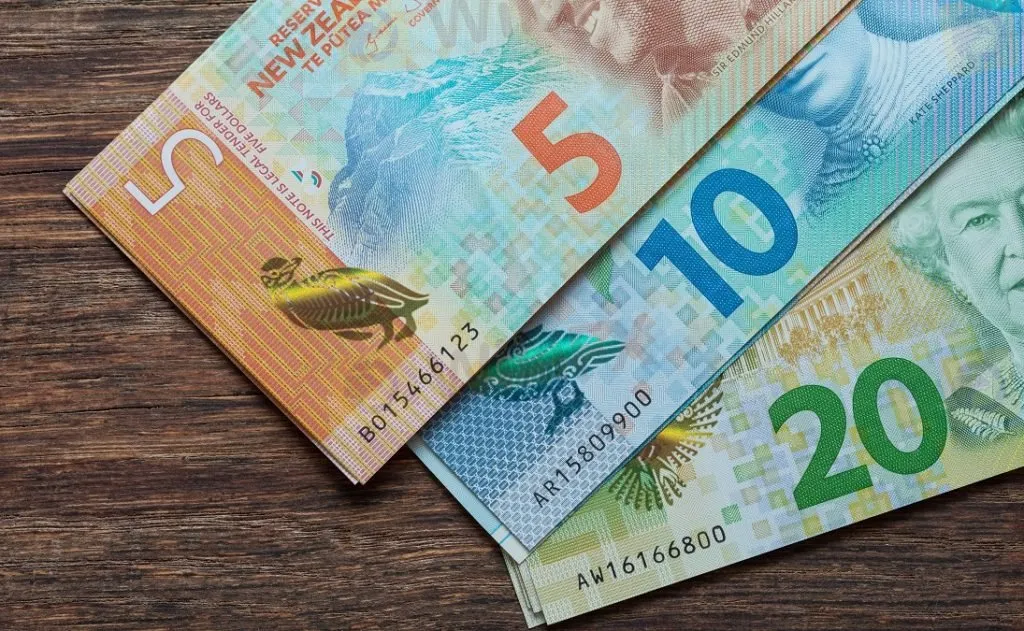NZD/USD Gyrates at Support as Economic Strength Bolsters RBNZ Rate Hike Bets
Abstract:APAC traders look to close the week out on a bright note following Wall Street rebound. RBNZ rate hike bets continue to strengthen as economy recovers from Covid lockdowns. And, NZD/USD clings to 100-day Simple Moving Average (SMA) after overnight drop.
NEW ZEALAND DOLLAR, NZD/USD, BUSINESS PMI, RBNZ, ECONOMY - TALKING POINTS

FRIDAY‘S ASIA-PACIFIC FORECAST
The New Zealand Dollar continued to move lower in overnight trading, extending the prior days’ dismal performance. NZD/USD is tracking a weekly loss near 1.5%, which was accelerated after the US Dollar‘s CPI-charged surge. The US Dollar remains on a path higher moving into Friday’s Asia-Pacific sessions, although upside momentum appears to be cooling off. That may allow the Kiwi Dollar to gain a foothold for a recovery going into the weekend.
A rebound on Wall Street bodes well for risk sentiment to close the week out in Asian equity markets. Today will bring consumer inflation expectations out of Australia for November. A rise over October‘s 3.6% figure may spark additional inflationary concerns in the domestic economy, which could help bolster RBA tightening bets. Still, yesterday’s jobs report has put a dovish spin on the central banks path forward.
New Zealand‘s performance of manufacturing index (BNZ) crossed the wires this morning at 54.3 for October. That is an increase from the upwardly revised September figure of 51.6. The improving conditions follow the rollback of Covid restrictions across much of the Kiwi economy. Next week’s services PSI reading will have traders looking for confirmation of the upbeat conditions in the economy.
The Reserve Bank of New Zealand has plenty of ammunition to continue down the path of hiking rates, unlike its cross-Tasman counterpart, the RBA. This gives the New Zealand Dollar a comparative advantage versus the Australian Dollar. NZD rate hike bets have increased in recent weeks while the currencys performance has lagged against the Greenback (see chart below). That opens the door for a break higher in NZD/USD on the next bout of USD weakness.

NZD/USD TECHNICAL FORECAST
NZD/USD broke below its 100-day Simple Moving Average (SMA) overnight. Prices are clinging to that level in early APAC trading. A clean break lower will see the 0.7000 psychological level shift into focus. The MACD line is eyeing a cross below the oscillators center line, a bearish signal. If bulls manage to bring prices back above the 100-day SMA, a deeper selloff will likely be avoided.
NZD/USD DAILY CHART

Source: DailyFX

Read more

KVB Market Analysis | 31 July: USD/JPY Holds Near 152.50 as Markets Eye BoJ and Fed Decisions
The USD/JPY pair hovers around 152.50, just above a three-month low, as traders anticipate the Bank of Japan's policy decision, expecting a 10-basis-point rate hike and bond-buying tapering, which supports the Yen. A slight recovery in the US Dollar has paused the pair's rise, with the Dollar Index near 104.50 ahead of the Federal Reserve's meeting, where rates are expected to stay unchanged but with dovish guidance.

Week Ahead Spotlight: CPIs, Retail Sales, RBNZ Rates!
In March, Canada's consumer price index increased by 0.6% compared to the previous month, surpassing the 0.3% growth seen earlier. In April, the Reserve Bank of New Zealand opted to maintain its official cash rate at 5.5 percent for the sixth consecutive meeting, emphasizing the ongoing need to address inflation fully. In March, the UK Consumer Price Index registered a slower-than-anticipated increase, reaching 3.2% in annual terms, down from the 3.4% rise observed in February. In March, UK...

Rate Rumble: RBNZ, BoC, and ECB Take Centre Stage
The New Zealand central bank maintain its benchmark interest rate at 5.50% as expected during its previous meeting. While there was no surprise of the central bank paused rates, the less hawkish tone was a surprise as 23% of the market surveyed by Reuters predicted an interest rate hike. In February, the rate of consumer price growth in the United States picked up pace with the reading came in at 3.2%, surpassing expectations of 3.1% for underlying inflation.

Explaining Candlestick Charts For Newbies
New to candlestick charts? Our comprehensive guide will explain everything you need to know. Start trading smarter and more profitably today with Capitist!
WikiFX Broker
Latest News
TriumphFX: The Persistent Forex Scam Draining Millions from Malaysians
Lawmakers Push New Crypto ATM Rules to Fight Fraud
2025 WikiFX Forex Rights Protection Day Preview
PH Senator Probes Love Scams Tied to POGOs
Mastering Calm: How to Stay Cool in Forex Trading?
The End of Costly USDT Transfers: Tron Reshapes Stablecoin Transactions
BP\s shareholders want it to make money, not climate policy
2025 SkyLine Guide Thailand Opening Ceremony: Jointly Witnessing New Skyline in a New Chapter
Why does Botbro change the domain name?
Safety Alert: FCA Discloses These 11 Unlicensed Financial Websites
Rate Calc

